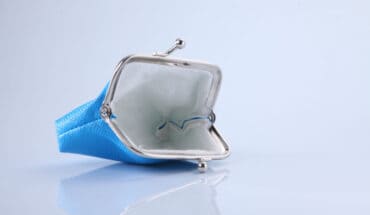There has been a strong link between human exposure to aluminium and the incidence of Alzheimer’s disease for half a century or more. However, without definite proof, there is still no consensus in the scientific community about the role of this known neurotoxin in this devastating brain disease.
The latest research from my group, published in the Journal of Trace Elements in Medicine and Biology, makes this link even more compelling. In my view, the findings are unequivocal in their confirmation of a role for aluminium in some if not all Alzheimer’s disease. At the very least, these new results should encourage everyone and even those who have steadfastly maintained that it has no role in the disease to think again.
I don’t believe that is the only factor, but I think it is an important one which should be considered very seriously.
When our new results are put into the context of what is already known about aluminium and Alzheimer’s disease their significance becomes overwhelming and compelling.
Individuals who develop Alzheimer’s disease in their late sixties and older also accumulate more aluminium in their brain tissue than individuals of the same age without the disease
We already know that the aluminium content of brain tissue in late-onset or sporadic Alzheimer’s disease is significantly higher than is found in age-matched controls. So, individuals who develop Alzheimer’s disease in their late sixties and older also accumulate more aluminium in their brain tissue than individuals of the same age without the disease.
Even higher levels have been found in the brains of individuals, diagnosed with an early-onset form of sporadic (usually late onset) Alzheimer’s disease, who have experienced an unusually high exposure through the environment (e.g. Camelford) or through their workplace. This means that Alzheimer’s disease has a much earlier age of onset, for example, fifties or early sixties, in individuals who have been exposed to unusually high levels of aluminium in their everyday lives.
We now show that some of the highest levels of aluminium ever measured in human brain tissue are found in individuals who have died with a diagnosis of familial Alzheimer’s disease.
The levels of aluminium in brain tissue from individuals with familial Alzheimer’s disease are similar to those recorded in individuals who died of an aluminium-induced encephalopathy while undergoing renal dialysis.
In support of our quantitative data, we have also used a recently developed and fully validated method of fluorescence microscopy to provide stunning and unequivocal images of aluminium in brain tissue from familial Alzheimer’s disease donors.
Familial Alzheimer’s disease is an early-onset form of the disease with first symptoms occurring as early as 30 or 40 years of age.
Familial Alzheimer’s disease is an early-onset form of the disease with first symptoms occurring as early as 30 or 40 years of age. It is extremely rare, perhaps 2-3% of all cases of Alzheimer’s disease. Its bases are genetic mutations associated with a protein called amyloid-beta, a protein which has been heavily linked with the cause of all forms of Alzheimer’s disease.
Individuals with familial Alzheimer’s disease produce more amyloid beta and the onset of the symptoms of Alzheimer’s disease are much earlier in life.
This new research may suggest that these genetic predispositions to early onset Alzheimer’s disease are linked in some way to the accumulation of aluminium (through ‘normal’ everyday human exposure) in brain tissue.
Ageing is the main risk factor for Alzheimer’s disease and aluminium accumulates in human brain tissue with ageing. Environmental or occupational exposure to aluminium results in higher levels of aluminium in human brain tissue and an early onset form of sporadic Alzheimer’s disease. The genetic predispositions which are used to define familial or early-onset Alzheimer’s disease also predispose individuals to higher levels of brain aluminium at a much younger age.
Aluminium is accepted as a known neurotoxin, for example being the cause of dialysis encephalopathy, and its accumulation in human brain tissue at any age can only contribute to any ongoing disease state or toxicity.
We should take all possible precautions to reduce the accumulation of aluminium in our brain tissue through our everyday activities and we should start to do this as early in our lives as possible.
The new research, published in the Journal of Trace Elements in Medicine and Biology is available online and open access (http://www.sciencedirect.com/science/article/pii/S0946672X16303777)
- Infant vaccines - 23rd April 2021
- Imagine you are an Aluminum Atom - 5th November 2020
- Aluminium in human brain tissue - 8th May 2020








The aluminium leach mostly come from the use of aluminium foil for baking or barbecue when the cheap aluminium foil comes into direct contact with the food. For example, the baked Salmon fish you just ate was lined with aluminium foil for easy washing. So your write up was”foiled” in some Ways. Cheers!
We need more people to make donations to support the research of Professor Exley and his team.
And tell everyone you know!